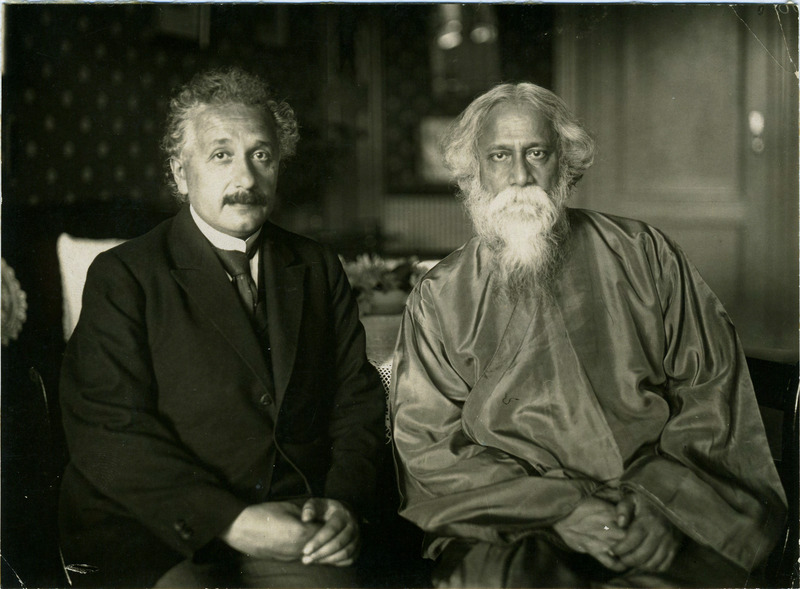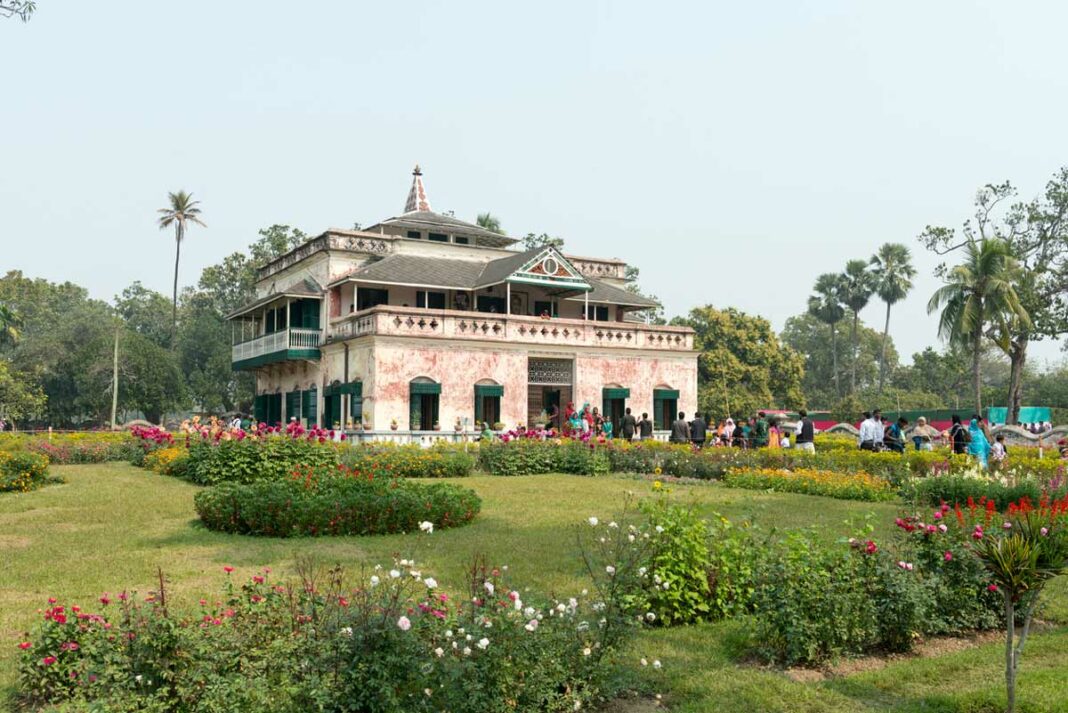Estimated reading time: 7 minutes
On the occasion of the 161st birth anniversary celebrations of the Nobel laureate Rabindranath Tagore let us have a look at his constant struggle for Indian Independence along with a peek into his personal lifestyle.
Rabindranath Tagore was born in an affluent, cultural Bengali family at Kolkata. The Tagores were labelled as Prilalini brahmins and they rejected conventional and orthodox beliefs while stressing on liberation of thoughts through art. Prince Dwarakanath Thakur, the grandfather of Rabindranath Thakur was well known and esteemed even amongst the English men. As the co-founder of “Brahmo Samaj” he heralded a social reformation that gained the appraisals of the educated and elite Hindu men. He contributed efficiently to the 19th century Bengal Renaissance which repudiated superstitious beliefs, motivated rational thinking and saw to the abrogation of various social evils like Sati. His son Debendranath Thakur; the father of Rabindranath Tagore went on to carry the legacy of Brahmo Samaj.

As western education seeped in to their veins, the Tagores cultivated logical thoughts and encouraged women education and widow remarriage. Their house became the ground where Bengali dramas were staged and enacted by the family members and outsiders too. Born on 7th May 1861 Rabindranath Tagore resented institutional education and was tutored in home by his brother Hemendranath. Urged by his elder brother he composed his first childhood poem, where the lines rhymed in a pattern.
“Aam sotto dudhe feli tahate kodoli doli Aam sotto dudhe feli tahate kodoli doli shondesh makhia dia tate hapush hupush shobdo charidik nistobodho pipre kadiya jay pate”
He was brought up in the midst of overflowing literature. His brothers and sister took part in theatres, composed songs and were great philosophers. As a poet, dramatist, song writer, essayist, painter, linguist and novelist he actively participated in the literary movement called Contextual Modernism. The movement which congregated and focused on the Santiniketan artists was observed by Kumar as they “reviewed traditional antecedents in relation to the new avenues opened up by cross-cultural contacts. They also saw it as a historical imperative. Cultural insularity, they realized, had to give way to eclecticism and cultural impurity.”
Tagore wrote poems and songs on spiritualism, modernism, love, nature and freedom. He viewed India as been strongly roped by the foreigners who exploited the natives in every possible ways. In his poems he calls for the Indians to awaken and revolt for freedom. As the first non-European to bag the Nobel prize in Literature; he left a million dazzled through his poetic words and sensitive poems as compiled in the Gitanjali. Known as the “Bard of Bengal” his poems, short stories, novels have been translated into different languages and studied all over the world. While Tagore’s artifacts continued to be cherished all over Bengal, it reached the multilingual level when Gulzar, the great poet, filmmaker and writer showed his interest for Bengali language in order to read Tagore. He worked to translate several of Tagore’s poems which was released as “Nindiya Chor” and “Baaghbaan”. He quotes, “I firmly believe that Tagore should be taught in schools all over India.”
At a personal level, being a Bengali girl who was born and brought up in Calcutta, I had an acquaintance with Tagore since a tender age. While my mother recited Tagore’s poems, my institution too had stories written by Tagore in syllabus. Initially, “Hidden Treasure” or “Mritunjaya” didn’t interest me much and neither was I able to romanticize Tagore like other people generally did. It was when I grew older and maturity started creeping in my bones, I would re-read Tagore and remain astounded by his philosophical thoughts. His method of handling human relationships and questioning human nature was terribly felt when I read “Nouka Dubi”, “Ghare and Baire”, and “Chokher Bali”. His female characters were sewed with a different thread as he expressed a women’s thoughts with sheer perfection and the female readers could connect with it. After a long time, I went on to relate Tagore with the Greek character, Tiresias in the manner that he supremely excelled in illustrating both male and female emotions extravagantly.
As a freedom fighter, Tagore took up his pen to protest against the colonial rule.
“Where the mind is without fear
and the head is held high
Where knowledge is free
Where the world has not
been broken up into fragments
By narrow domestic walls”
As he uplifted the spirits of his country men through his poems, he went on to design a new India which has been liberated from the British rule as he calls his countrymen into an awakening. His dream was idealised by the Indians as they stopped surrendering to the white man domain. Deeply riled by the Jallianwala Bagh massacre, which took place on April 13th 1919, where a mass of non-violent protesters was grounded and shot by 50 troops. Tagore showed his indignation towards General Dyer’s infamous order by giving up his knighthood that was offered by Lord Hardinge in 1915. He aligned himself with the loss that his country grieved of. Gandhiji adopted the policy of swadeshi and non-violence and urged people to burn foreign clothes and wear Khadi. Other reverent men, politicians too supported the view including Tagore.
However, after a certain point of time Tagore felt the reckless burning of foreign clothes to be something fruitless. For a country which was stricken with poverty and where men could barely afford food, under such a scenario the wasting of resources didn’t favour the marginalised classes of the society. Moreover, he studied the dichotomy in people who embraced swadeshi but instead of embarking upon a journey of fighting for freedom, they adopted malpractices and were involved in money making. Tagore highlighted such a political scenario in his novel “The Home and the World” (Ghore Baire) and he writes:
I am willing to serve my country, but my worship I reserve for Right which is far greater than my country. To worship my country as a god is to bring a curse upon it.
His politics took an ambiguous turn with the resentment of the politics of the Europeans and his denial of the Swadeshi movement. His denouncement for the Swadeshi movement was announced in his essay, “The Cult of Charkha”. Here he spoke about Gandhi’s policy of non-cooperation and swadeshi movement. A rivalry and a silent retreat were noticed between the politician and the intellectual as the latter rejected the means of the former. Tagore in his essays and lectures highlighted the British’s underlying policy of Divide and Rule which instigated a religious feud between the Hindu and the Muslims. Lord Curzon’s decision of partitioning Bengal in the year 1904 deeply affected him and he delivered a lecture entitled “Swadeshi Samaj” where he prompted for an alternative decision. His song “Banglar mati Banglar jol” was composed to promote a unity amongst the population of Bengal. Tagore conjured upon uniting the East and the West and felt the need to understand each other’s cultures. This he labelled as nationalism and he writes:
What is needed is eagerness of heart for a fruitful communication between different cultures. Anything that prevents this is barbarism.
His views on nationalism were presented well in “The Home and the World” where he talks about a more human like nationalism which will grow with the active participation of all Indians. There would be equality in it and both men and woman could take part in it. Thus, Tagore conjured an Utopian world where there will be no differentiation on the basis of caste, creed, race or religion. This perfect world only men can build if he is liberated from the shackles of not just colonial rule but rather “dead habits”. It is then men can call themselves as free.
The institutionalised education didn’t appease Tagore much. He hated the rot learning of western system of education and goes on to write upon it in his story “The Parrot’s Training”. He feels that nature plays an important role in elevating the process of learning. Henceforth, he insists on learning amidst the lap of nature. His foundation of the Viswa Bharati University follows a similar concept and stresses on the idea that the educators must behave like mentors who shall guide the students towards spiritual and intellectual development.
The 21st century accentuates on the works of Tagore to have a clear understanding of the era of Indian Independence. Several authors have glorified Tagore in their verses and novels. Till today he remains as an inspiration to thousand Indians and his works helps in developing thoughts. The Viswa Bharati University established by Tagore is considered today as the central university of Bengal and it still keeps the legacy of the Tagorian method of education alive. The Bengali polymath has established his position as a successful writer in the hearts of his readers and his poetry echoed the peace of soul that tuned well with the euphony of nature.
Recent Posts:
- July 2, 2025
- June 26, 2025
- June 16, 2025
- June 16, 2025
- June 16, 2025



















